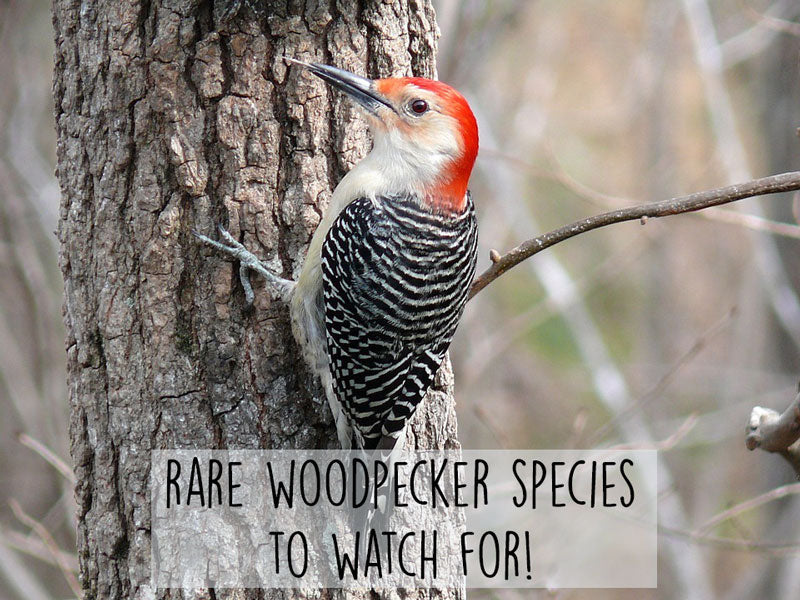Offer
Provide additional details about the offer you're running.
Provide additional details about the offer you're running.
Provide additional details about the offer you're running.

If you’ve spent any time at all paying attention to hollowed-out tree trunks, seemingly unstoppable hammering or the activity happening around a winter suet cake, you have undoubtedly noticed the beauty of our native woodpeckers.
Here in our area we are treated to regular sightings of pileated woodpeckers, downy woodpeckers, hairy woodpeckers and our northern flickers. While these are traditionally strong in numbers here in the Ottawa area, there are a few other species that make appearances at times. Spotting them might be the trickiest part about them and knowing how to properly identify them guarantees to the make the experience all that much more enjoyable.
Red-bellied Woodpecker
Another beautiful woodpecker, the red-bellied woodpecker is a sight to behold and are easily recognizable, when the opportunity presents itself. In terms of size, these birds are roughly the same size of a hairy woodpecker and appear pale in colour overall. Their most defining feature is however, not their belly, as their name suggests. Instead, look to their brilliantly coloured red head and black-and-white stripes on its back for key identification markings.

These beauties will often partake in backyard bird feeding so keep an eye out at your feeders throughout the year. While these birds are characteristically found down through the eastern United States, there are healthy numbers in southern Ontario and a handful of sightings in our area each and every year.
Black-backed Woodpecker
Coming from another direction is the black-backed woodpecker. This is one of our favourite woodpeckers and is a striking sight to behold when the opportunity presents itself. Unlike the red-bellied who is typically situated south of us, this woodpecker calls Canada’s Boreal Forest home and is found throughout the northern portions of Ontario, Quebec, Manitoba, Alberta, Saskatchewan, British Columbia and a few of the Maritime provinces as well.
These birds are constantly on the move, often in search of burned-over sites in search of one of their favourite foods, wood-boring beetles.
These birds are denoted by their black colouring, which on their backs is incredible deep in colour and unmistakable. Additionally, the males sport a yellow crest atop their heads that comes almost as far as the bird’s beak.
Your best opportunity to spot one of these black woodpeckers is during the non-breeding season as individuals move south of their breeding range in search of better food sources.
High Quality Blend